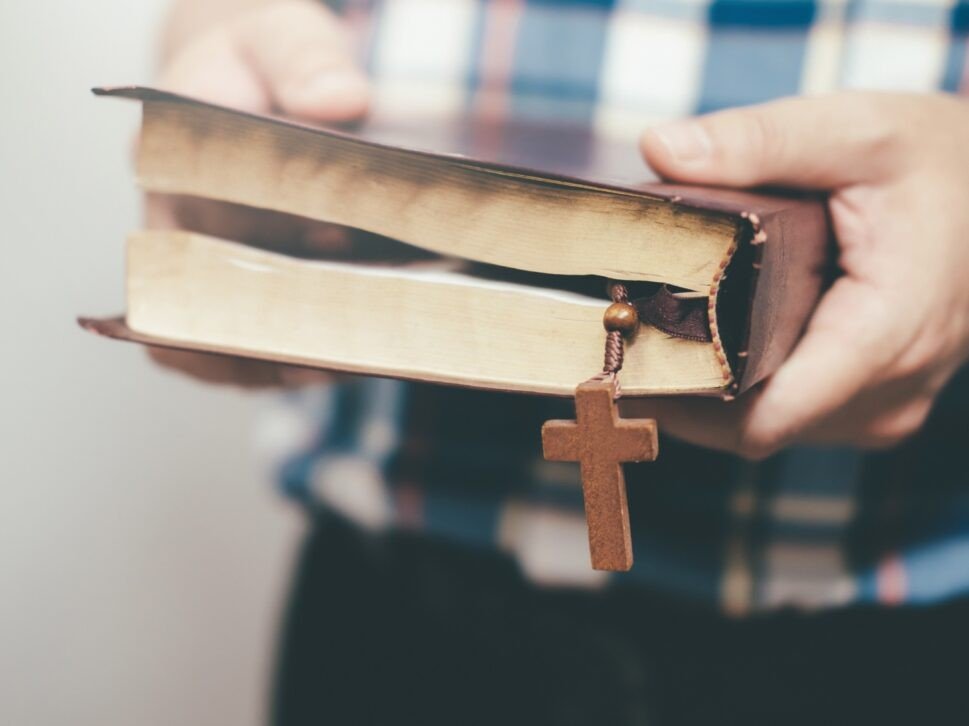Rau kinh giới là gì?
Since people in the biblical era did not have access to the products we do today, they often relied on naturally occurring resources such as plants, animal byproducts, and minerals for cleaning, cooking, food, medicine, and more. Hyssop, an herb in the mint family with cleansing, medicinal, and flavoring properties, was prolific in the Middle East and was used in a variety of ways.
Đức Giê-hô-va cũng phán cùng Môi-se và A-rôn rằng:
Lê-vi Ký 14:33
The Bible mentions hyssop several times, mostly in the Old Testament. In Leviticus, God commanded His people to use hyssop in the ceremonial cleansing of people and houses. In one example, God tells the priests to use hyssop together with cedar wood, scarlet yarn, and the blood of a clean bird to sprinkle a person recently healed from a skin disease (likely leprosy). This act would ceremonially cleanse the formerly diseased person and allow him to reenter the camp (Leviticus 14:1–7). The same method was used to purify a house that had previously contained mold (Leviticus 14:33–53).
Rồi hãy lấy một chùm kinh giới nhúng vào huyết trong chậu, bôi lên mày và hai cây cột cửa, đoạn, trong các ngươi chớ ai ra khỏi cửa nhà mình cho đến sáng mai.
Xuất Ê-díp-tô Ký 12:22
Hyssop is also used symbolically in the Bible. When the Israelites marked their doorposts with lamb’s blood in order for the angel of death to pass over them, God instructed them to use a bunch of hyssop as a “paintbrush” (Exodus 12:22). This was probably because hyssop was sturdy and could withstand the brushing, but it also likely signified that God was marking His people as “pure” and not targets of the judgment God was about to deal out to the Egyptians.
Xin hãy lấy chùm kinh giới tẩy sạch tội lỗi tôi, thì tôi sẽ được tinh sạch; Cầu Chúa hãy rửa tôi, thì tôi sẽ nên trắng hơn tuyết,
Thi-thiên 51:7
David also mentions hyssop in Psalm 51:7: “Cleanse me with hyssop, and I will be clean; wash me, and I will be whiter than snow.” David does not refer to physical cleansing—rather, he is asking God to cleanse him spiritually as he confesses his sin.
Hyssop also appears at Jesus’ crucifixion, when the Roman soldiers offered Jesus a drink of wine vinegar on a sponge at the end of a stalk of hyssop (John 19:28–30). This was, in fact, Jesus’ last act before He declared His work on earth finished and gave up His spirit. While the hyssop stalk may have been used for purely practical purposes (i.e., it was long enough to reach to Jesus’ mouth as He hung on the cross), it is interesting that that particular plant was chosen. It is possible that God meant this as a picture of purification, as Jesus bought our forgiveness with His sacrifice. Just as in the Old Testament blood and hyssop purified a defiled person, so Jesus’ shed blood purifies us from the defilement of our sin.
* Kinh Thánh Tham Khảo:
Lê-vi Ký 14:33 - Đức Giê-hô-va cũng phán cùng Môi-se và A-rôn rằng:
Xuất Ê-díp-tô Ký 12:22 - Rồi hãy lấy một chùm kinh giới nhúng vào huyết trong chậu, bôi lên mày và hai cây cột cửa, đoạn, trong các ngươi chớ ai ra khỏi cửa nhà mình cho đến sáng mai.
Thi-thiên 51:7 - Xin hãy lấy chùm kinh giới tẩy sạch tội lỗi tôi, thì tôi sẽ được tinh sạch; Cầu Chúa hãy rửa tôi, thì tôi sẽ nên trắng hơn tuyết,
Giăng 19:28 - Sau đó, Đức Chúa Jêsus biết mọi việc đã được trọn rồi, hầu cho lời Kinh Thánh được ứng nghiệm, thì phán rằng: Ta khát.
* Bản Dịch theo GotQuestions
* Nếu bạn cảm thấy bản dịch này chưa đúng hoặc chưa phù hợp, xin hãy liên hệ và đóng góp bản dịch mới.
* Nếu bạn cảm thấy bản dịch này chưa đúng hoặc chưa phù hợp, xin hãy liên hệ và đóng góp bản dịch mới.
Nếu bạn thích trang này, xin hãy giúp chúng tôi chia sẽ cho bạn bè:
